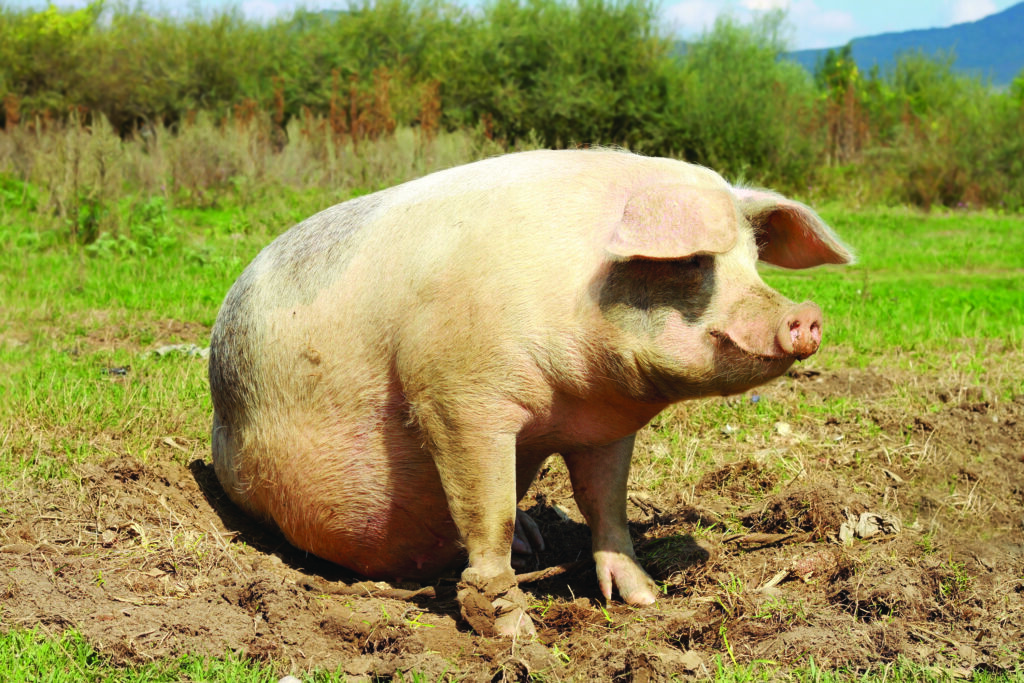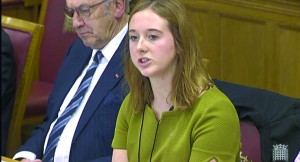The UK pig industry has, quite rightly, made much of its high animal welfare standards over the years.
On both the domestic market, where import competition is fierce, and in the burgeoning export arena, demonstrating our high standards relative to those of our competitors is seen as key to growing market share and earning a premium. Brexit will add a whole new dimension to this.
Farming Minister George Eustice has made it clear he intends to use funding available under a UK agricultural policy to provide incentives to ratchet up our already world-leading animal welfare standards.
Inspired by tiered schemes in Germany, the Netherlands and Denmark, he wants to create a UK brand ‘based on the best animal health and welfare standards in the world’.
But there are also fears new post-Brexit trade deals could damage the UK livestock sector unless appropriate safeguards are put in place to protect farmers and the public from lower standard imports.
During a House of Lords roundtable event as part of an inquiry into the implications of Brexit for animal welfare, National Farmers Union (NFU) deputy president Minette Batters described it as an ‘ethical challenge’.
She warned UK farming would be the victim if the ‘cheap food brigade’ gets its way and the UK is opened up to cheap imports produced to lower standards and under a completely different regulatory framework.
The industry representatives were deeply sceptical of assurances from the Prime Minister and her Ministers that they will not allow UK welfare standards to be compromised in post-Brexit trade deals. After all, Mr Eustice has acknowledged that World Trade Organisation (WTO) rules, as currently drafted, will make it difficult to ban imports on welfare grounds.
Animal welfare matrix
With this in mind, the National Pig Association (NPA) has produced a comprehensive document that seeks to bring clarity to the debate.
The ‘Animal Welfare Matrix’, compiled by NPA senior policy advisor Georgina Crayford, outlines the different welfare labelling schemes and legislative requirements in place across selected key pork producing countries – the UK, Denmark, Netherlands, Germany, Spain, Poland, the US, Canada and Brazil. Sweden is also included because of its high animal welfare standards.
Dr Crayford, who told the Lords inquiry there was no question of UK pig farmers lowering their high welfare standards, said: “The purpose of the document is to highlight where these differences exist. When negotiating trade deals with third countries, it is vitally important that the UK pig sector is not undercut by imports of pork from countries with lower welfare standards. We must insist on equivalent standards.
“Equally, we are adamant the Government must not gold-plate our already high standards, as this would only risk pushing up costs and sucking lower standard imports in.”
Regulatory differences
Some of the differences highlighted include:
Sow stalls
UK and Sweden – banned since 1999.
Most of the EU – permitted for up to four weeks after service.
US – banned in nine states (in some cases from future dates). Permitted in the rest for entire 16-week gestation period. Major pig production companies Smithfield Foods and Hormel Foods are planning to phase out ‘gestation crates’ this year.
Canada – still permitted. However, all holdings built or rebuilt after July 2014 must group house mated gilts and sows, although stalls may be used for up to five weeks.
Brazil – legally permitted. The biggest pork producer BRF is phasing them out by 2026 and the second biggest, Seara, is ‘gestation stall free’.
Farrowing crates
Sweden – banned, although temporary crating is permitted at farrowing in exceptional circumstances.
UK and most of rest of EU – sows may be kept in farrowing crates from seven days before farrowing until weaning.
Brazil, US and Canada – legally permissible.
Straw-based/outdoor systems
UK – 40% of sows are outdoors, 90% of indoor sows and 60% of finishing pigs are kept on straw, 2-3% of finishers are free range and 0.6% of production is organic.
Sweden – more than 90% of sows and finishers are kept on straw. But just 1% of Swedish pigs are kept outdoors and these are all organic.
Rest of EU, US, Canada, Brazil – very few, if any, pigs are kept outdoors or on straw indoors. Most are kept on slatted floors. Very few organic pigs.
Use of antibiotics for growth promotion
UK and most of the EU – banned since 2006.
Sweden and Denmark – banned since 1989 and 2000 respectively.
US – permitted, but from January 2017, it has been illegal to use medically important antibiotics for production purposes.
Canada – permitted. Antibiotics may be imported to Canada in large quantities for ‘own use’ without any regulatory oversight by producers. Many antimicrobials important to treat humans are freely available in this way without veterinary oversight.
Brazil – permitted. Antibiotic growth promoters (AGPs) are commonly used on pig farms.
Ractopamine (feed additive to promote leanness)
UK and rest of EU – banned since 1996. EU also bans imports from certain countries where ractopamine is used.
US, Canada and Brazil – approved for use as a feed additive in pigs. Canada has a mechanism certifying that pork exports originate from pigs that have never been fed and/or exposed to ractopamine.
Castration
EU – permitted. Must be performed by a trained person and, after seven days, anaesthetic or painkillers must be used and it may only be done by a vet. There is a voluntary agreement that surgical castration
should be phased out altogether from 2018.
UK – not permitted under Red Tractor, so just 2% of male pigs are castrated. This compares with Sweden (94%), Denmark (95%), Netherlands (20%), Germany (80%) and Spain (20%).
US, Canada and Brazil – legally permissible. In the US and Brazil, there are no laws around when it should be done or the use of anaesthetic or pain killers. In Canada, a code of practice covers timing and pain relief.
Tail-docking
EU – legally permissible to dock a part of the tail where there is evidence of tail-biting. Other measures must be taken to prevent tail-biting before docking is performed. Must be carried out by either a vet or trained person. There are slightly different rules in Denmark and tail-docking is banned in Sweden.
UK – The Real Welfare report estimated 70% of UK pigs have their tails docked. This compares with virtually all pigs in Denmark, Holland and Germany and 92% in Spain.
US, Canada and Brazil – Legally permissible to tail-dock. There are recommendations in the US and Canada about how it should be done.
Comparing EU welfare labelling schemes
The UK
The UK does not have a single tiered welfare scheme, although there is natural differentiation, notably through Red Tractor, RSPCA Assured and Soil Association (organic). The various UK production systems – conventional indoor, outdoor-bred, outdoor-reared, free-range and organic – also create differentiation.
Denmark
The Danish Product Standard outlines requirements for pig production under the DANISH logo. Its main focus is animal welfare, meat safety and traceability.
Expected to launch this summer, Bedre Dyrevelfaerd (Better Animal Welfare) is a voluntary Danish Government tiered welfare labelling scheme developed in conjunction with the industry. It has three levels, indicated by one, two, or three hearts. There are no subsidies – the scheme is market-driven.
The Netherlands
Beter Leven (Better Life) is a seal awarded by the Dutch Society for the Protection of Animals to farms, butchers, and meat processors that meet certain animal welfare criteria. Similarly, there are three levels to the scheme, depicted by one, two or three stars. Slaughterhouses pay farmers according to the star level in the hope they will get a premium back from the retailers.
Germany
Initiative Tierwohl, funded by participating food retailers, covers 27% of total pigs slaughtered each year. Payments of €0.04/kg of pigmeat are made to producers who implement basic requirements, such as antibiotic and welfare recording and annual ventilation and air, and water quality checks. Additional payments are made for further optional criteria, such as 10-40% more space, group housing of sows from six days post-service, free-farrowing and minimum weaning age of 28 days.
See Table 1 below for a selection of the standards across the schemes in place in the UK, Denmark and the Netherlands.






